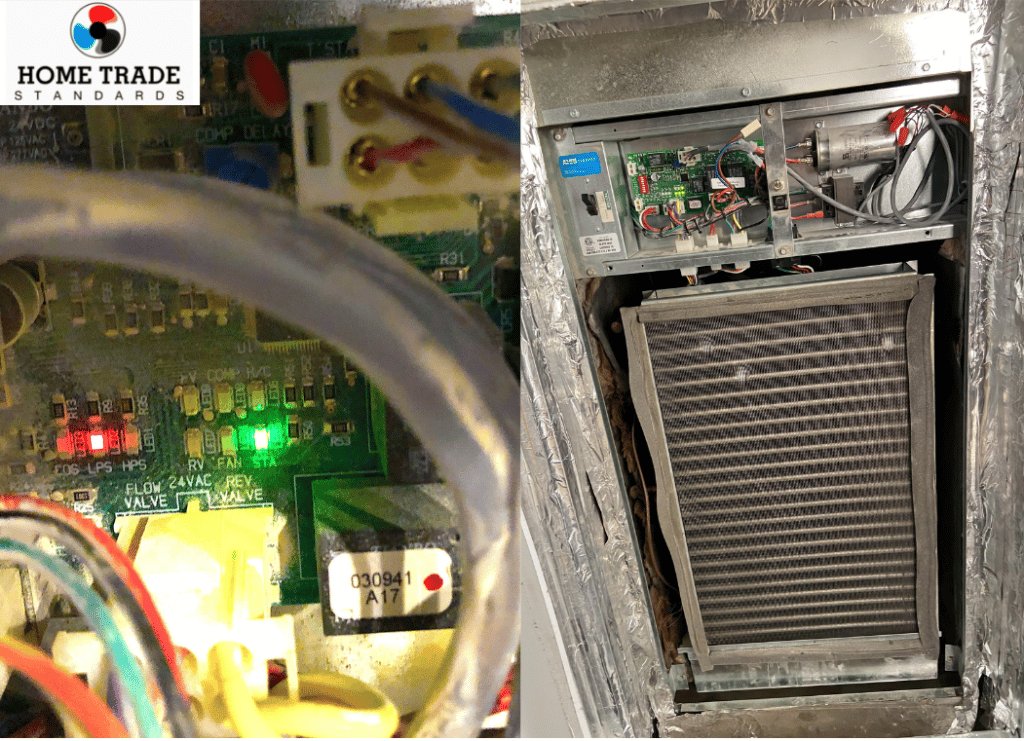Understanding the Red Light on Your Condo Omega Heat Pump LPS

If you notice a red light on your Omega Heat Pump LPS, it’s important to understand what it signifies. This indicator can reveal various issues that may require attention. Here’s a guide to what the red light might mean:
- System Malfunction: The red light could indicate a general malfunction within the heat pump. This might be related to the unit’s internal components or electrical systems.
- Temperature Fluctuations: If the heat pump is experiencing abnormal temperature fluctuations or failing to maintain the desired temperature, the red light may signal a problem with the temperature sensors or control systems.
- Faulty Components: The light might be a sign of faulty components, such as the compressor or motor. This could lead to inefficiencies or complete system shutdown if not addressed promptly.
- Maintenance Required: Sometimes, the red light serves as a reminder that routine maintenance is due. Regular servicing can prevent potential issues and ensure the unit operates efficiently.
- Power Issues: The red light might also indicate power supply problems, such as a tripped circuit breaker or insufficient voltage.
To resolve the issue, consult your heat pump’s user manual for specific troubleshooting steps. If the problem persists, it’s advisable to contact a professional HVAC technician to diagnose and fix the issue. Ensuring timely repairs can help maintain the efficiency and longevity of your Omega Heat Pump LPS
Troubleshooting Red Light Issues on Your Condo Omega Heat Pump LPS
If you’re seeing a red light blinking on your Omega Heat Pump LPS, it may indicate several issues, often related to your building’s water temperature or other system components. Here’s what you need to know:
1. Refrigerant Leak:
A low refrigerant level can cause the LPS to activate, preventing the heat pump from operating effectively. This could be due to a refrigerant leak that needs addressing.
2. Compressor Issues:
If the compressor isn’t functioning correctly due to mechanical problems, it can cause a pressure drop in the refrigerant circuit, triggering the LPS. Replacing the compressor might be necessary to resolve this.
3. Air Flow Restrictions:
Dirty or blocked air filters can restrict airflow, leading to a drop in refrigerant pressure and activating the LPS. Ensure that air filters are clean and that no furniture obstructs the front access panel.
4. Faulty Low-Pressure Switch:
Sometimes the LPS itself may be malfunctioning or incorrectly wired, causing it to activate even if the pressure is normal. This might require a replacement of the switch.
5. Building Water Pressure:
Since Water Source Heat Pumps depend on proper building water pressure and temperature, deviations from these standards can cause system shutdowns and red LPS lights. It’s crucial to have a qualified HVAC specialist evaluate the building’s water pressure and temperature to address any issues.
Action Steps:
- Reset the System: Try resetting the heat pump from the breaker panel or the unit’s cabinet. This might provide a temporary fix.
- Frequent Resets: If you find yourself frequently resetting the system, consult with a professional HVAC technician to avoid potential damage to other components.
- Schedule an Inspection: Contact a qualified Condo HVAC service provider to diagnose and repair the issue. Proper maintenance and timely repairs can ensure your heat pump operates efficiently.
Get Professional Help
As condo heat pump systems are often unique to high-rise buildings, it’s essential to have a specialized HVAC technician handle any problems. GTA Restore provides comprehensive services for condo HVAC systems, including repair, installation, and replacement. We offer a 1-year parts and labor guarantee on all services.






